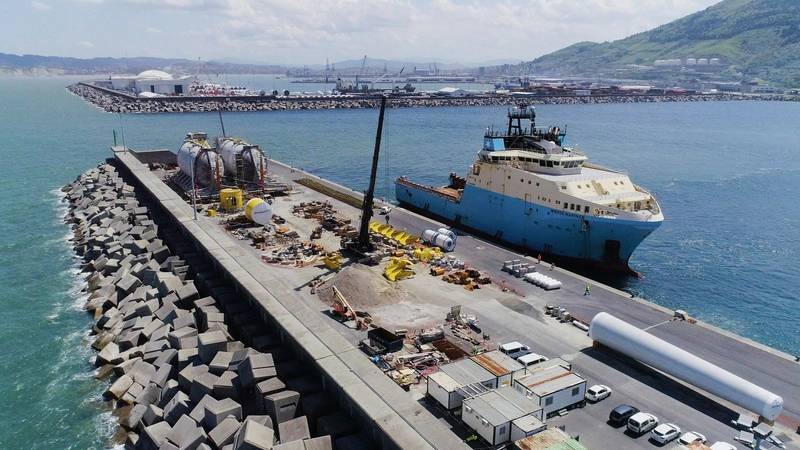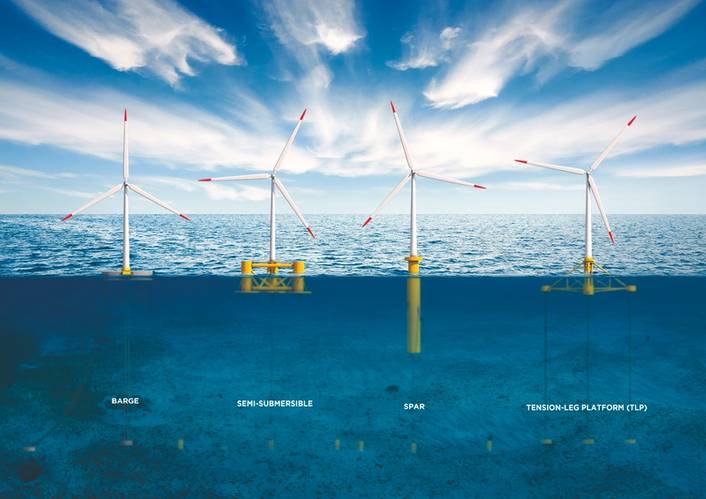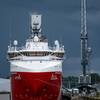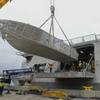Anchor Handler Construction: What to Expect as Floating Wind Picks Up
A fleet of newbuild specialized anchor handlers will be required to help build up the emerging floating offshore wind industry. But since the industry is still in its early days, many unknowns have made it difficult for shipyards and their partners to gear up to build this fleet. This article explores complex market demand and technical drivers that help give a better understanding of anchor handler requirements for floating offshore wind.
Floating wind is an emerging technology currently being tested in small scale demonstration and pilot projects; at the end of 2022, global floating wind commissioned capacity was less than 200 megawatts (MW). By 2030, close to 6.5 gigawatts (GW) of commercial scale wind farms are planned to be commissioned, the majority in Europe and the Asia Pacific Region. Then, 2030-2035 will see a period a high commissioning activity as the U.S. joins established and also new European and Asia Pacific markets. Floating installed capacity is forecast to reach around 63 GW by 2035.
Whereas floating wind projects will leverage experiences from the bottom-fixed industry, there will also be many differences, particularly in how floating turbines are constructed and installed. A major difference is the need for large anchor handlers and large subsea construction vessels to pre-install mooring systems designed to maintain the position of the floating wind turbines, to tow the structures from port and to hook-up and tension the floating turbines to the pre-installed moorings. Based on a detailed review of technical drivers, Intelatus identifies the optimal size of existing anchor handling tug supply (AHTS) vessels for mooring pre-lay as having a bollard pull of at least 250 tonnes and a clear back deck of over 800 square meters. The capabilities of existing subsea construction vessels with AHC cranes of 250 tonnes and above and large clear back decks are also suitable for certain pre-lay operations. But existing oil and gas market demand and the technical requirements of floating wind projects is unlikely to be met by these existing vessels.
The above capacity projection of 63 GW by 2035 translates to the installation of over 5,000 floating turbines, more than 20,000 anchors and over to 30,000 mooring lines.
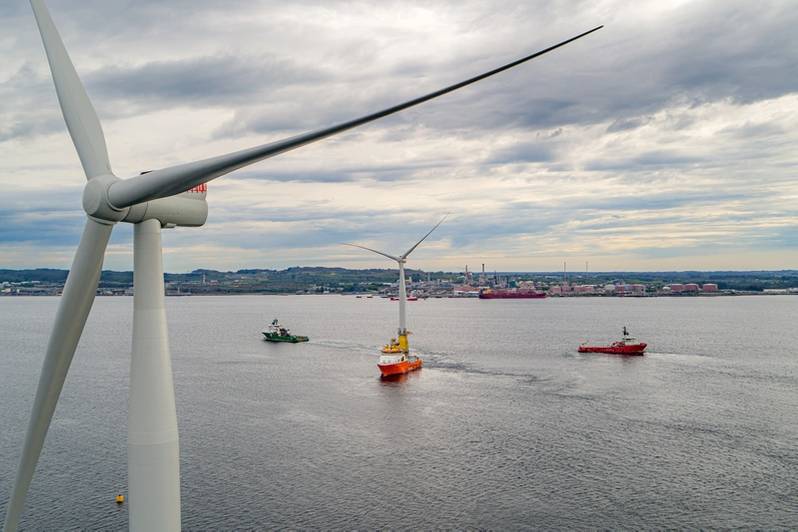
Simply put, there will be a large demand for vessels in the anchor handling segment, which has seen limited recent newbuilding activity due to poor market conditions in the core oil and gas sector; only six large anchor handlers have been delivered in the last five years. Newbuilding prices for five of these large anchor handlers were around $80-85 million at the time ordering—price levels that are not likely to be achieved in today’s building market.
Since then, there has been limited activity to guide price estimates, but we have seen costs rise for vessel types across the board. A capital cost estimate of at least $100 million for a similar vessel seems reasonable.Subsea construction vessel supply is also likely to be stretched by high demand from oil and gas projects.
As a result of market conditions, our forecast identifies a shortage of large anchor handler and subsea construction vessels toward the end of the decade. As demand in floating wind continues to grow, available supply is expected to be reduced further as activity continues to pick up in deepwater oil and gas—a sector that drives demand for large anchor handlers and subsea construction vessels.
So, what do shipbuilders and their supporting partners need to plan for?
With around 100 floating wind design concepts at varied levels of technical maturity, multiple anchor types to accommodate and three principle mooring line materials (chain, wire, and synthetic rope), there is no one single immediate dominant project solution, which drives the need for flexible installation vessels.
Our analysis indicates that the most efficient installation vessels for floating wind projects will not necessarily be classic large anchor handler or subsea construction vessels, but rather hybrid anchor handlers capable of providing flexible solutions to developers and project engineers who have a variety of floating wind technologies, anchors and mooring line concepts to consider.
Several market players are known to be developing floating wind specific vessel concepts that are evolutions of the more traditional designs. Based on our analysis of floating wind project requirements, we expect the next generation anchor handlers to feature:
- High bollard pull, anchor handlining frame and a large AHC crane
- Large back deck
- Multiple large winch drums
- Large chain lockers
- Work class ROVs
- Flexibility to support different tensioning options
- Low or zero emissions operations, battery energy storage systems, etc.
- Embedded digitalization
We anticipate such vessels to cost significantly more than existing large anchor handler designs, with reported estimates in the range of $175-200 million. Such investment requires high day rates and long-term charter commitments, which are generally not available today.
And then there are questions about economics as developers face increasing pressure to keep rising project costs at bay. Many of the builders capable of producing high-spec anchor handlers—including yards in China, Norway and Singapore—and their financial partners continue to deal with the damage of low utilization and newbuilding activity in the OSV segment post 2014.
Many owners experienced financial difficulties and were unable to pay down debts accumulated during newbuild expansion programs initiated between 2008 and 2013, while many of the traditional shipping banks that funded the newbuilding boom took significant impairments, which have left them cautious about lending to OSV projects. Many private equity vehicles suffered heavy losses from OSV investments. Finance is still available from new market entrants and alternative capital providers. However, the appetite for financing new vessels comes with many restrictions.
One thing is certain: shipbuilders will need answers (and commitments) sooner rather than later if the floating wind industry hopes to minimize the severity of projected vessel shortages.
Intelatus Global Partners has recently published a floating wind installation vessel forecast report, available here. For more information or to inquire about the report, contact Philip Lewis at [email protected].
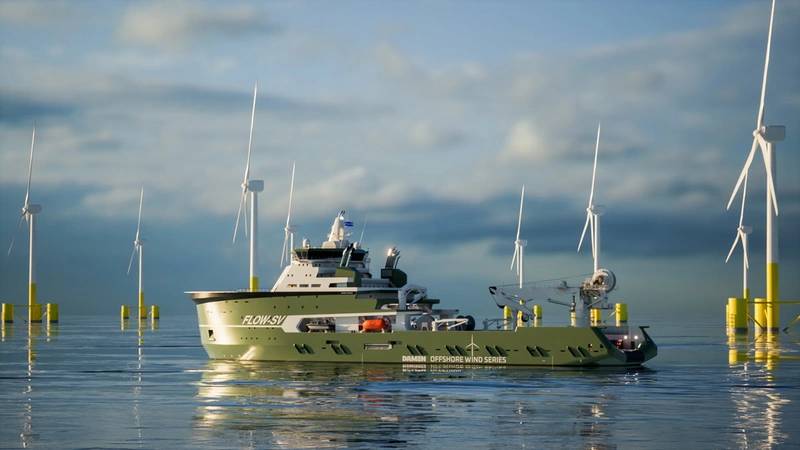 Several market players have unveiled new vessel designs tailored to the floating offshore wind market. Damen says its FLOW-SV is specifically designed to install ground tackles for floating offshore wind projects. (Image: Damen)
Several market players have unveiled new vessel designs tailored to the floating offshore wind market. Damen says its FLOW-SV is specifically designed to install ground tackles for floating offshore wind projects. (Image: Damen)






